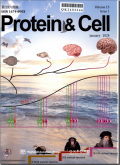Engineering vascularized skeletal muscle tissue with transcriptional factor ETV2-induced autologous endothelial cells
Dear Editor,Newly engineered tissues often fail to function due to insufficient blood vessels formation.Autologous vascular endothelial cells are ideal sources for tissue engineering but are often of limited availability.We first identified that transcriptional factor Etv2 (ets variant 2,initially named as Etsrp)was specifically expressed in the zebrafish vascular endothelial cells and was required for vascular development in zebrafish (Sumanas and Lin,2006).ETV2 has been found to increase endothelial differentiation of human and mouse embryonic stem cells as well as to directly transdifferentiate somatic cells into endothelial-like cells (Lindgren et al.,2015;Morita et al.,2015).In zebrafish embryos,overexpression of Etv2/Etsrp induced vascular gene expression and converted fast skeletal muscle cells into endothelial cells that were incorporated in functional blood vessels (Veldman et al.,2013).This finding suggests that ETV2 could be potentially used to generate autologous endothelial cells from human skeletal muscle cells for regenerative medicine.It is worth noting that protocols for skeletal muscle cells isolation and ex vivo expansion have been well established,allowing efficient production of muscle satellite cells/myoblasts from minimally tissue invasive (Webster et al.,1988).Therefore,selection of skeletal muscle cells as an alternative isogenic source for generating endothelial cells has practical advantages and benefits.
10
2019-05-09(万方平台首次上网日期,不代表论文的发表时间)
共6页
217-222






